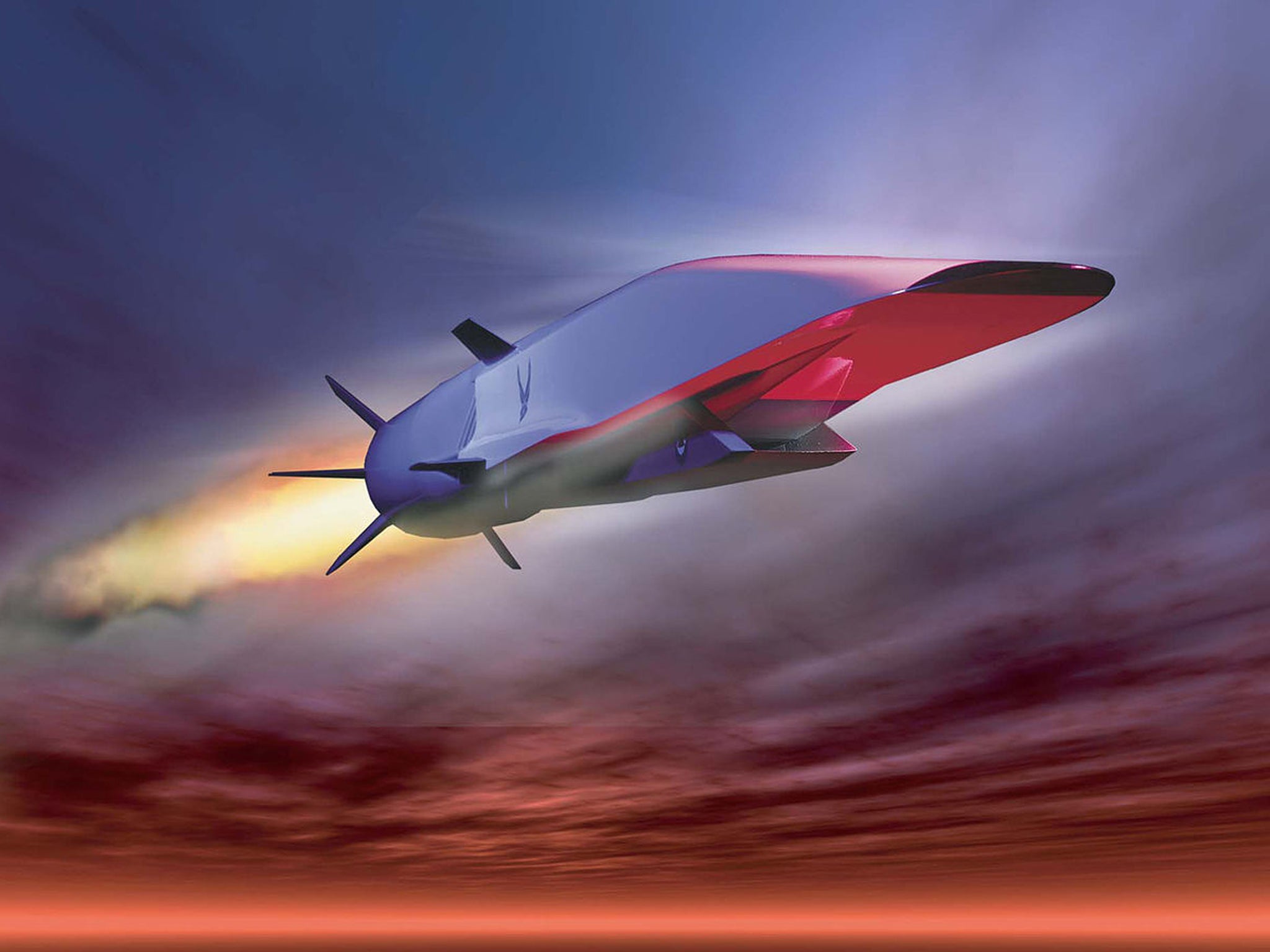Air Force developing planes that could cross Atlantic in hour, will be super-fast weapon
The X-51 WaveRider drops out of the bottom of a bomber and can fly many times the speed of sound

Your support helps us to tell the story
From reproductive rights to climate change to Big Tech, The Independent is on the ground when the story is developing. Whether it's investigating the financials of Elon Musk's pro-Trump PAC or producing our latest documentary, 'The A Word', which shines a light on the American women fighting for reproductive rights, we know how important it is to parse out the facts from the messaging.
At such a critical moment in US history, we need reporters on the ground. Your donation allows us to keep sending journalists to speak to both sides of the story.
The Independent is trusted by Americans across the entire political spectrum. And unlike many other quality news outlets, we choose not to lock Americans out of our reporting and analysis with paywalls. We believe quality journalism should be available to everyone, paid for by those who can afford it.
Your support makes all the difference.The US Air Force is developing a super-fast weapon that can fly many times the speed of sound.
Travelling at over Mach 5.1, the jet could make it from London to New York in an hour. But it will be used instead as a super-fast weapon, working like a missile.
"We are the Air Force. What do we want to do with this technology? We want to weaponise it," Ryan Helbach, an official with the Air Force Research Laboratory, told Military.com. It’s unclear how it would be used as a weapon, but US officials expect that China and other countries are building similar technology.
The X-51 WaveRider, developed by Boeing, works by dropping out of a traditional plane. During successful tests, it flew through the air using almost no moving parts and a special air-breathing system that allows it to fly so fast.
The plane must be given a kickstart to get going, so is first propelled by an attached rocket booster. That takes it up to about Mach 4.5, and then drops off — the X-51 can do the rest of the work from there, accelerating up to Mach 5.1.
It was tested in 2013, when the plane flew at almost 4,000 mph and reached 60,000-feet before it ran out of fuel and dropped into the sea.
Boeing is now working with the Defense Advanced Research Projects Agency to shrink it into a weapon that could be attached to bomber planes.
When that happens, the plane will be able to strike targets without pilots and aircraft ever having to get close to them.
"You could then attack defensive targets, those heavily defended or the time-critical targets in a very timely manner — if it's a moving target, before it can move," Kenneth Davidson, who manages the development at the Air Force Research Laboratory, told Military.com. "And then ultimately, these would have a sensor so that they can track a moved target — not necessarily something that is moving, but if the target moves or it gets into the area, they can see the target and hit it very, very accurately."
Join our commenting forum
Join thought-provoking conversations, follow other Independent readers and see their replies
Comments